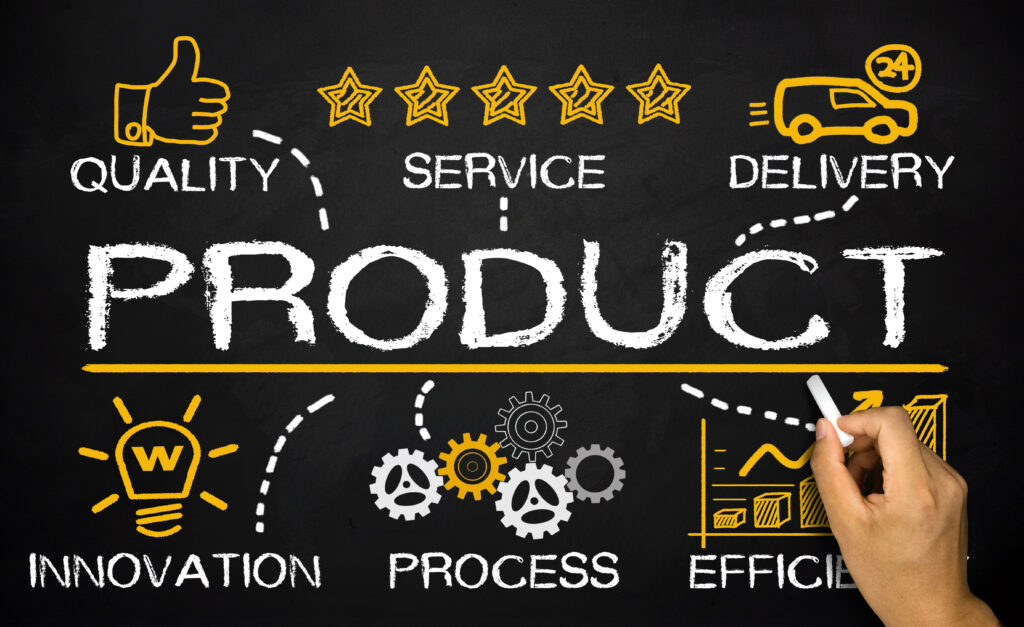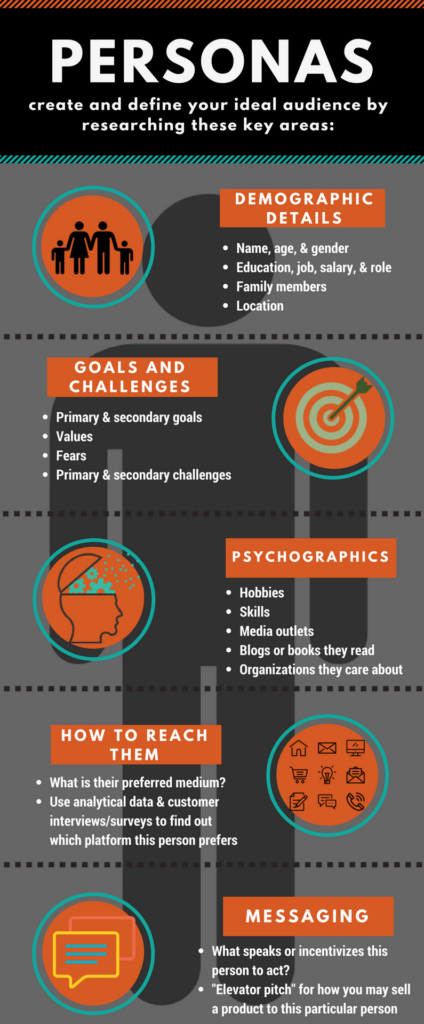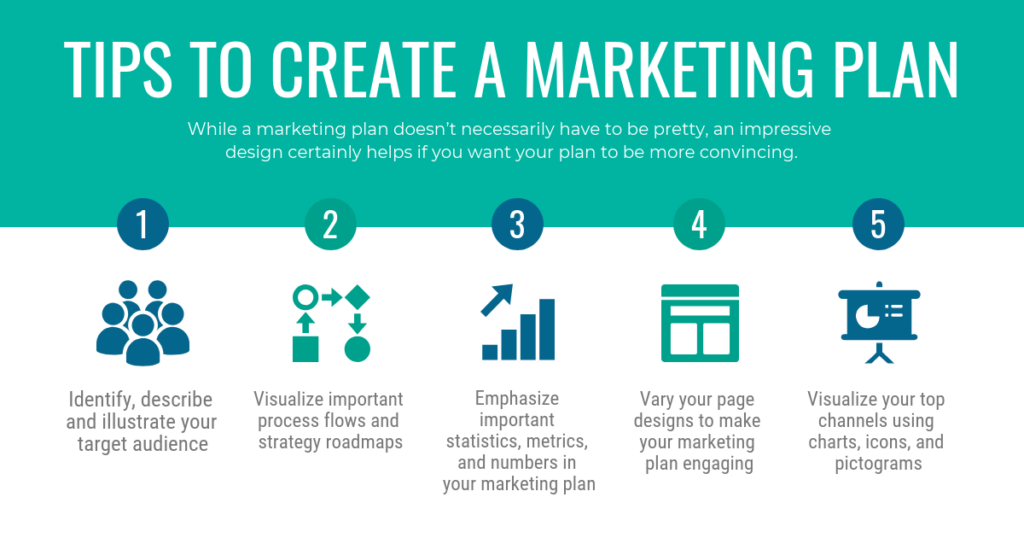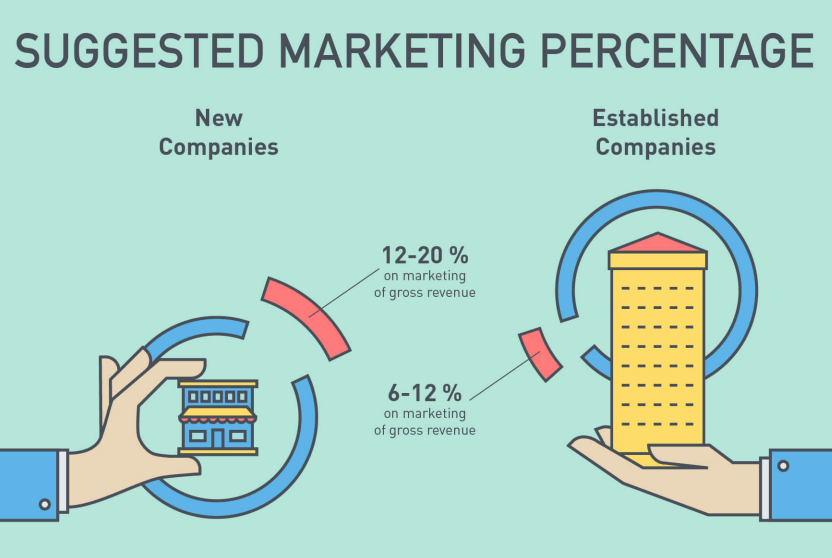How to Make a Marketing Campaign Step by Step

Marketing is a powerful tool when used correctly. However, many people believe that the outcomes will be immediate by just posting or making a campaign. Unfortunately, it is not that easy. Marketing takes time and planning. To obtain the desired results, you need to prepare in advance to achieve those goals you set for your business.
Marketing is all about planning, so let’s learn how to do a step-by-step plan to grow your business through campaigns.
Know your Product or Service

You cannot develop a great marketing campaign if you don’t know your product or service. A marketing campaign is based on your product’s features, benefits, differentiation from others, and details about your product and purchaser.
Your product needs to show that it is better and different for a successful marketing campaign even when other products are very similar to yours. The best way to learn about it is by researching price, features, distribution, special services, competition, benefits, and based on the outcomes, you can make a great campaign.
But wait, there is more! You also need to know about the market dynamics and how buyers’ behaviors influence the dynamics of your marketing campaigns. You need to understand how your product can benefit from brand archetypes and how marketing based on archetypes can impulse your leads. Even how music can affect the way your customers see your products. Learn about your unique selling proposition and start developing small posts based on them.
When doing a marketing campaign, you need to pay attention to every detail because those details make the difference between a successful product or a mediocre campaign.
Here are some guide questions that help you develop your marketing campaign (based on your product).
- What makes your product different from similar others?
- Which features of your products make them different?
- How can my product connect with feelings or human characteristics?
- Which are the benefits of your product?
- Is your product’s price competitive?
- Is the product package attractive for your consumer?
- Are the colors used on the package attractive enough?
- What are the best places to distribute your product?
- Which marketing trends affect your product (positives and negatives)?
Define your Target Market
You shouldn’t develop a marketing campaign without having a target buyer already defined. To define the best prospect for your business, you need to research your customer persona or buyer persona. To determine the best buyer for your product is to save you money and increase the chances of acquiring buyers.
Don’t just depend on demographic or geographic information. Enquired about other aspects of your customers, for example:
- Why did you choose the specific target customer?
- Where do they buy their products?
- Which are their purchasing patterns?
- Why do they buy certain products similar to yours?
- What motivates them to purchase; price, service, features, looks, etc.?
- What social media do they use the most?
- What are the comments they make on social media?
- Which is the best method to communicate with your target?
- What type of lifestyle do they carry on?
- Which are their hobbies?
Before you start developing your campaign, it will be good to have all your information handy. Conduct a test to verify you selected the proper customer target; maybe that is not the right one for you. You can conduct in-person interviews, focus groups, social media surveys, email surveys, or use a third-party agency to research for you (if you have the budget).

Basic Elements of a Campaign
What do you expect from a marketing campaign? That question will help you define your goals, and it would help to focus on what you wish to gain for your business.
Brand awareness
Setting your goals to increase brand awareness is crucial if you want people to remember your products when making purchases (which is precisely what all businesses wish to). In addition, brand awareness will help individuals become familiar with all products that carry your brand. Finally, brand awareness also includes the association of positive experiences with the brand, which leads to trust and confidence in your business.
The best method to measure brand awareness campaigns is after the increase in traffic on social networks, the rise of interaction in chats, social media responsiveness to surveys, and other types of engagements methods.
Establishing brand awareness is vital to provide your brand with its unique personality (archetypes). This personality is the element that will contribute to linking the brand with the market. Therefore, you need to select a method to connect to your audience and promote brand awareness. Here are examples of how you can deliver outstanding campaigns.
- Keep people interested in your brand through articles.
- Connect with customers and future buyers through social media postings.
- Share content about the great features of your products using everyday experiences.
- Post about the importance your brand has in values and community inclusion.
- Be part of the community and its events.
Good Leads
A lead is a potential customer’s contact when inquiring about the brand or product. You generate leads through touchpoints. Good leads refer to individuals who pass through the touchpoint funnel and are most likely to become your buyer. The way you generate leads is through the use of touchpoints funnel. Those touchpoints may include:
- ads,
- email,
- news,
- social media,
- tv,
- mail,
- word of mouth,
- events,
- coupons
- free samples,
- content
- many more!
You can measure your lead generator using revenue attribution. Revenue attribution is the process of connecting sales to specific advertisements. This helps to understand where the sales are coming from to increase the marketing budget in those areas.
Convert into a Thought Leader
Becoming the best in your industry is the main goal every business should aim for. Thought leaders include individuals or organizations that society recognizes as experts in their fields. They are considered to have a high level of knowledge and credibility.
The thought leaders provide confidence and trust to a brand. Such actions can increase sales because customers are more willing to purchase from businesses with a high trust state.
To become a thought leader takes perseverance and application. The first step is to become an expert within your industry. Once you become an expert, share your knowledge through relevant pieces of content. For example, participate in webinars, social activities to enrich individuals, industry discussions, development of professional blogs, or share of knowledgeable inputs through social media posts.
You can use the following CTAs (call to action) to measure thought leadership.
- Lead Generation
- Form submission
- “Read More” buttons
- Product or Service link
- Social sharing
- Event promotion
- Blog link
- Webinar link
Rise Customer Value
Customer value (brand value) is a customer’s value to the brand, product, service, or another business component. It is closely attached to the customer’s perception of the value they obtain for their investment (purchase, participation, etc.).One of the best ways to increase customer value is through their experiences. Well-done services provide a pleasurable experience to the client, which causes an increment in value. The best way to measure increased customer value is through positive comments on posts, positive word of mouth, customer recurring purchases, and referrals.

Improve Social Media Presence
Social media is the best tool to grow brand value and potential customers and buyers. Today, companies need more than ever to maintain constant contact with the audience—what better way than through social networks. The main goal should be to stay in touch with your potential and current customers. One way is through producing engaging content, posts, blogs, videos, and even images. Each one of these methods should be attached to a set of keywords to improve SEO and reachability. In addition, social media is the best method to keep customers happy and informed about the latest trends, new products, services.
The best way to measure is through the increase of followers and participants.
The best way to develop great goals is through using SMART.
- Specific: focused on the target
-
- Example: Increase leads
- Measurable: use metric to verify results
-
- Example: increase leads by 7% (the average is 6%)
- Achievable: it can be achieved, a goal that can turn into reality
-
- For example, the average percentage of new leads is about 6%, so hitting a 1% increase is achievable.
- Relevant: tied to a realistic marketing or business goal
-
- For example, it is attached to the purpose of increasing leads and subsequently, buyers
- Timely: it has a time limit
-
- For example, running a campaign for six months
Set Your Budget
Setting your budget should be much easier after defining your goals. The goals will give you a precise idea of the time-lapse you are looking at and the intensity of the marketing campaign you will be needing. When developing a budget for marketing, it is savvy to keep in mind your return on investment. You don’t want to invest in something without certainty to gain something in return. To make sure your investment is saved, you need to be clear about the purchasing power of your customers. That power purchase will be your return on investment.
Every cent count when doing a marketing budget. So, setting a realistic budget is a must to effectively deliver the message to your prospects or buyers. Here is an example of the most common expenses when doing marketing:
- PPC (pay per click) on Google or Bing
- Content development
- Graphics
- Email & Mail marketing
- Paid Ads
- Events & Trade Shows
- Video development
- Social Media Management
Let’s say you are developing marketing for a product. Here are the most common elements your campaign should include:
- Research
- Competitive Analysis
- Focus Group/ Survey
Testing Your Product
- Testing Meetings
- Software
Presentation of your Product
- Social Media Management
- Product Launch event
- Paid Advertising
Content Development
- Case Studies
- Demos
- Videos
- Social Posts
- Product Push
- White Papers
- Many more!
Let’s say you budget $100 per element, putting you at $1,400 per month. If you multiply that number for six (6) months which is the minimum you should run a campaign, you have the amount of $8,400. Wow!
Another way you can do this is by paying per day through Facebook or Instagram. For example, let’s say you pay $5 per day; in 31 days, they will charge you about $155. In six months, you will spend approximately $930!
The good thing about this is that 2% may turn into conversion if you do a great campaign. If you have no experience, sadly, you will waste your money.
For some small businesses or new entrepreneurs, those are significant numbers and most probably will say, “I cannot afford that.” Luckily Zona Shoppers is there to help with these high costs and aid in the development of more small businesses.

Select the Marketing Method
To select the most appropriate media for your campaigns is better to use those your prospects or buyers are using. Another important aspect of using media is that it should be according to your budget. You don’t want to spend all your budget on one media; it is better to diversify your campaign on various methods. For example, you set up a campaign on Instagram, another on Google, and another on Pinterest. The broader your extensions, the better to reach more people.
Also, keep in mind your goal when using media. Each media has a different reach, so using the appropriate one for your purpose is a guaranteed investment.
- Facebook = Communicating and brand awareness
- Instagram = Bonding and discovering
- Twitter = Discovering and connecting
- Pinterest= Expand on find information about products
- LinkedIn = Growth Thought Leader
Develop Your Messaging
What do you want the prospects or buyer to know, learn, see, hear, understand? Most importantly, what do you want your customers or prospective customer to know about you or believe about you? This is one of the main reasons why a marketing campaign is developed.
It helps when individuals believe in your message, in what you are telling them, so the message must be convincing. How are you supporting it? In other words, which facts are you offering? Don’t just make-up details; give accurate and objective information. Nowadays, people can easily search in Google to find out about your business.
Another important aspect is to whom the message is directed. A campaign’s statement must be based on what the brand wants to convey. Therefore, it is sometimes necessary to use a specific expression or jargon linked to a particular audience to penetrate a unique market. Personalized campaigns can’t be used across the board as they won’t have the same impact. Keeping those details in mind will help you develop a great campaign.
Also, you can conspicuously present the problem. You don’t need to go straight to the problem. Instead, use other methods to deliver the solution to a problem indirectly.
Be concise. Don’t overextend explanations; sometimes, short and precise is better than long and tedious. You can also go for powerful marketing messages; it depends on the receiver.
Don’t forget to include a catch, offer, hook, and detail to make the individual inquire for more information.
Metrics
Now comes the most important part; how to measure your outcomes?
No doubt developing a marketing campaign is essential, but even more, it is to check if that campaign is working. Therefore, you need to verify different stages when doing campaigns, the beginning, the running, and the outcomes.
In the beginning, you need to verify if you select the proper media for your product or service. Next, you need to be aware of your target market and relate to the type of marketing they are most likely to watch or accept.
You need to be aware that your campaign is working as you planned during the running time. Here, you need to check if those hooks you used are working. For example, are people searching for more information, using the coupons, or pressing the buttons. It is crucial to maintain a high level of efficiency when dealing with marketing; after all, it is expensive, and you’re on a budget.
By the end of the campaign, verify how everything went. What causes the most significant impact?
Which campaign worked the best?
Which gives you the most effective return for your investment?
Did you meet your goal?
What went wrong?
How can you do it better on the next campaign?
What unexpected outcomes affect or improve your marketing?
Which areas can you invest more in marketing, and which should you remove?
All those questions should be part of your outcome scenario. The more question you develop, the more you will learn to create great marketing campaigns for your products.
Tip: You can also verify your outcomes as such:
- How many organic visits to your site or store? Use Google Analytics to verify this information.
- The number of emails sent vs. the number of emails opened. It would be best if you had specialized software to track this.
- Did your CPC (cost per click) work? How many people click your ad? Use Google Analytics to verify the information.
- How many engagements did you receive on your posts, blogs, and social media in general? You will need a specialized social media tool to analyze this type of data or use the analytics from social media.
As you can see, social marketing campaigns are not just a photo or a video. They pack much more than meets the eye. It is constant and complex work, but its reward is enormous. Good planning is the right path to a successful campaign. Take your time to research, analyze and expand on specific topics and how to link them to your brand message.


